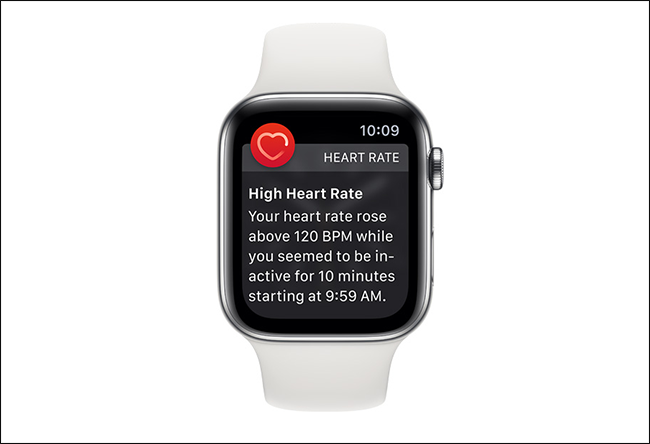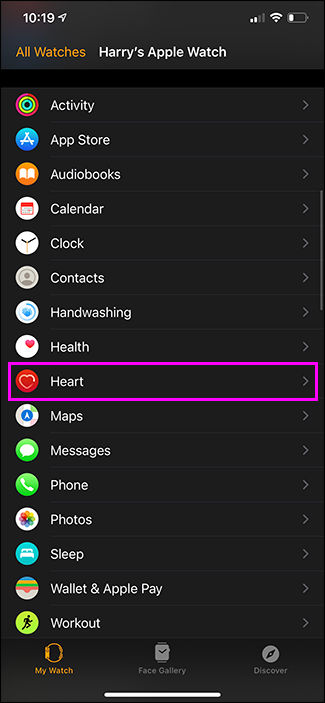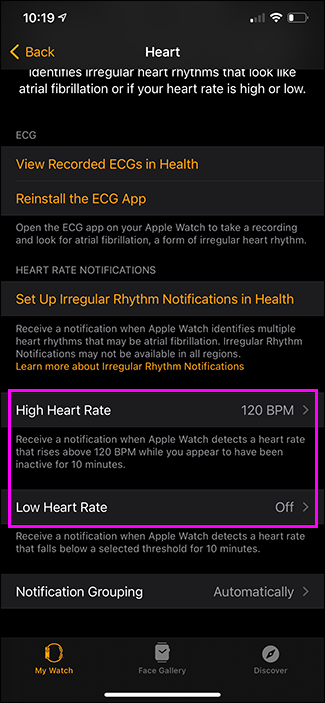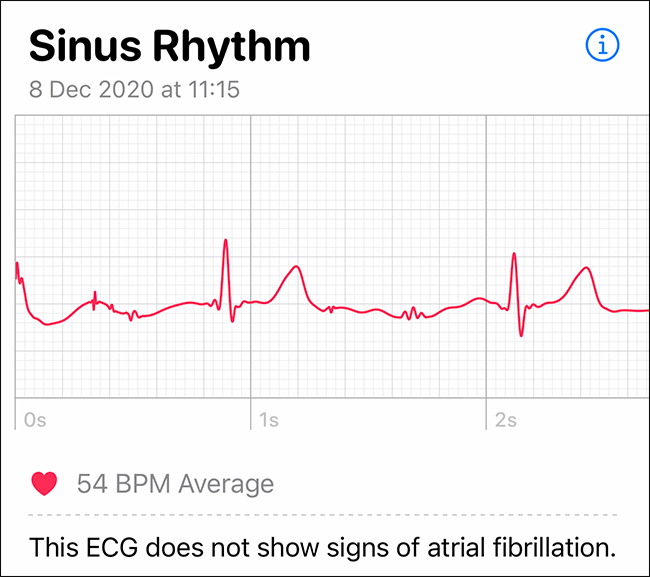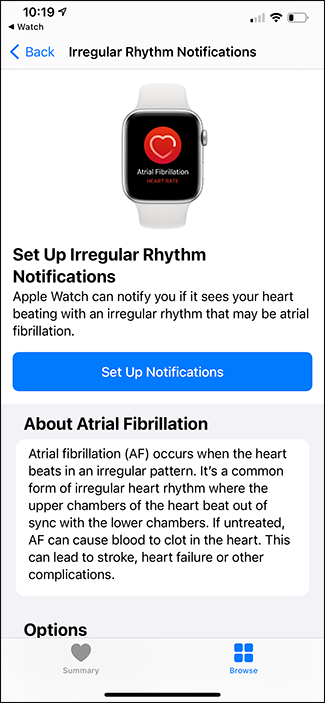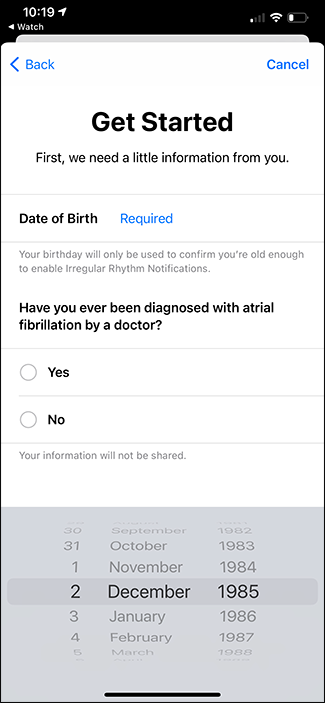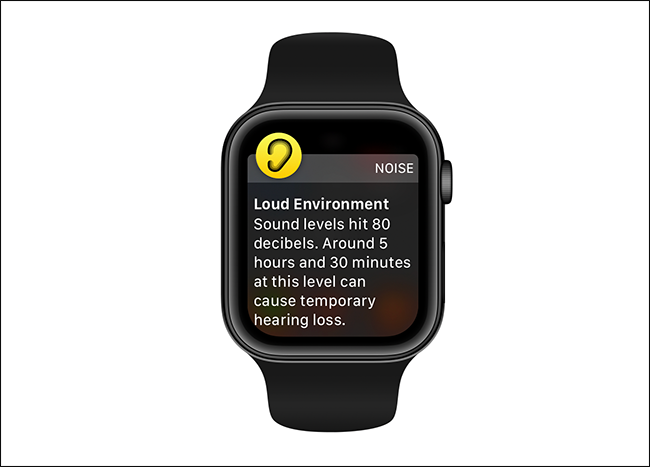Quick Links
The Apple Watch has been a good fitness tracker since its launch in 2015. With each subsequent generation, it's gained additional hardware features. The latest Apple Watches can detect and monitor a few different health conditions.
Caution: The Apple Watch Isn't a Medical Device
First, I must mention two big caveats. The Apple Watch is in no way a replacement for your doctor, nor is the internet, nor am I (check my bio: I'm just a writer).
This article will give you an overview of the different health conditions the Apple Watch can potentially detect. Just keep in mind, the device can't diagnose you. If you're at all concerned about the different readings or results you get from any of the sensors, contact your doctor.
Also, the Apple Watch is still relatively new. A lot of research is still being done (you can even participate if you want) on which conditions it can potentially monitor. Of course, we won't see the results of those studies for a while.
The Apple Watch isn't a medical device---it's a smartwatch. If you have a condition (or are concerned you might) that needs to be monitored, you know what to do: contact your doctor.
Now, let's take a look at what all an Apple Watch can detect right now (with the research to back it up).
High and Low Heart Rates
The Apple Watch has two ways of measuring your heart rate:
- Apple Watch Series 1 or later: Uses an optical heart rate sensor.
- Apple Watch Series 4 or later (excluding the first SE model released in 2020): Uses an electrical heart sensor used by the ECG app.
In every Watch that has it, the optical heart rate sensor can detect if you have an abnormally high or low heart rate. By default, if your heart rate stays above 120 bpm after 10 minutes of inactivity or falls below 40 bpm for 10 minutes, you'll get a notification.
If you want to change the thresholds, you can do so in the Watch app on your iPhone. Just go to "Heart" and set a new value for "High Heart Rate" and "Low Heart Rate."
The electrical heart sensor only works when you use the ECG app. It's like those beeping machines you see in medical dramas, and it takes a far more accurate measure of your heart rhythm. If you experience intermittent heart symptoms---like your heart skipping a beat or a rapid heart rate---you can record an ECG with the app, and then share it with your doctor. During a telemedicine consultation, your doctor might even ask you to use it.
Keep in mind, though, with heart rate monitoring, what's normal for one person might be abnormal for another. For example, I don't have low heart rate alerts turned on because I have a relatively low resting heart rate---it hovers just below 45 bpm.
For someone else, a heart rate below 50 bpm might be cause for alarm. Similarly, the high heart rate alerts only trigger if your heart rate is high and you're inactive. So, don't worry---you won't set it off if you go for a run.
Always remember, if you're worried about anything, call your doctor.
Abnormal Heart Rhythms
In addition to your heart rate, the Apple Watch can also measure your heart's rhythm. In particular, it checks for atrial fibrillation (AFib), which is when the upper chambers of your heart beat irregularly. It can be a serious medical condition or a symptom of one.
The Apple Watch can be particularly helpful with AFib because it can detect intermittent events. Conditions like AFib can be hard to diagnose because they don't always happen when you're conveniently sitting in a doctor's office.
Again, there's a fairly heavy dose of caveats with this feature:
- The Apple Watch's ability to detect irregular heart rates is backed up by a large-scale study, but it isn't constantly measuring. You could have AFib and never get a notification. There could also be false positives, meaning you get a notification but you don't have AFib.
- This feature is only available in certain countries due to varying requirements. In Australia, for example, the Apple Watch would have to be approved as a medical device to enable this feature.
- It isn't meant to be used on people under the age of 22, or those who've already been diagnosed with AFib.
You also have to enable irregular heart rate detection. To do so, open the Health app on your iPhone, go to Heart > Irregular Rhythm Notifications, and then tap "Set Up Notifications." You'll then have to provide some information to confirm it's suitable for you to use.
The Apple Watch does not monitor for heart attacks. If you're experiencing any heart attack symptoms, seek immediate medical attention.
Warns You About Loud Environments
Hearing loss doesn't normally happen quickly, but rather, it develops slowly, over time. The more time you spend in loud environments, the worse things are likely to get. However, you can do something to prevent this.
The Noise app (available on the Apple Watch SE, and Series 4 or later) can measure the level of background sound and let you know if it rises above a certain threshold (80 dB, by default). Then you can use earplugs or go somewhere quieter. At the very least, you'll know you're potentially damaging your ears.
To set up this feature or change the threshold, go to Settings > Noise on your Watch.
Detects When You Fall
Older people aren't the ones who need to worry about slipping or falling. Anyone can fall off their bike, slip in the shower, or take a tumble off a ladder. Fortunately, your Apple Watch can tell when this happens and automatically call emergency services, which could save your life.
As always, there are some caveats, though. There's no guarantee your Apple Watch will detect all falls. You can also trigger false positives, especially if you're young and active.
When you set up your Watch, you'll be given the option to enable fall detection. If you didn't do so or want to double-check, here's how.
What the Future Looks Like
The Apple Watch Series 6 added a blood oxygenation sensor (SpO2), a feature that is now also found in the Apple Watch Series 7. For the time being, it's explicitly a fitness and wellness tool, rather than a medical or health-monitoring feature. We can safely assume, however, that this will change in the future. Low blood oxygen saturation levels are associated with common conditions, like asthma, sleep apnea, and COVID-19.
Apple recently announced that studies are being conducted on a variety of health conditions, including asthma, heart failure, influenza, and COVID-19. Just a few years ago, a research paper showed how an Apple Watch could predict diabetes and hypertension.
While these capabilities are confined to the realms of research at the moment, it might not be long before they find their way to your wrist.


